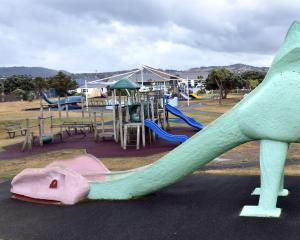However, the Otago Primary Principals' Association has taken issue with some of the recommendations of the university's Cancer Society Social and Behavioural Research Unit director and study leader, Associate Prof Tony Reeder.
While New Zealand primary pupils have benefited from improved sun-protection efforts in recent years, a newly published analysis of results from a 2009 survey of 388 randomly selected schools throughout the country, found only 4% met all 12 criteria in the New Zealand SunSmart Schools accreditation programme.
By contrast, 52% of Australian schools surveyed in 2005 had attained Australia's equivalent accreditation.
The 12 criteria for SunSmart accreditation relates to school policy, information provision, hats, other clothing, play in the shade, sunscreen, staff role modelling, curriculum content, event planning, outdoor activities rescheduling, shade provision and policy review.
The study showed about 33% of schools met 10 or 11 of the 12 criteria, while one-sixth achieved half or less of them.
While the results indicated progress, Prof Reeder said there was still "considerable" room for improvement.
"Only 58% of our schools reported having a written sun-protection policy, while 80% of Australian schools had such a policy in 2005.
"We also found sun-protective clothing, curriculum delivery and environmental shade emerged as the areas that schools were struggling with the most."
He said 42% of schools met the requirements for encouraging the use of protective clothing, and 54% had sufficient shade, or were working to increase shade within the next 12 months.
One response could be to work with suppliers to ensure suitably protective and affordable clothing products were readily available, and considerable improvement could be achieved if shade was stipulated for consideration in all school building plans, he said.
Just over half of schools provided adequate sun protection lessons at all levels of the curriculum, but existing teaching resources deserved greater promotion, and he recommended the development of further resources be prioritised.
Sun exposure in children was a major factor in influencing a person's lifetime risk of melanoma - the type of skin cancer most likely to be fatal, he said.
"Students are at school when UV radiation levels are at their peak, so it is vital to encourage comprehensive sun protection that encompasses school policies, practices and environment, as well as the curriculum."
Otago Primary Principals' Association president Brent Caldwell said sun safety was a community-wide issue, and one in which schools were leaders.
Both the Cancer Society and Public Health nurses provided schools with "superb" support via the SunSense programme, he said.
"Given that many of our existing school environments were designed long before the dangers of over-exposure to UV were widely accepted, boards of trustees and their staff have done much to reduce and minimise the risk.
"One only has to look around our schools to see excellent examples of covered sandpits, natural and man-made shade structures used in creative ways, as well as the now ubiquitous sunhat.
"These are now well-established expectations and practices for all schools - not just those that opt into the SunSense programme.
"The process of putting in place steps to meet all 12 criteria does take time, which may have some bearing on Prof Reeder's team's 2009 data," he said.
Sunsmart accreditation
The 12 criteria
• School policy
• Information provision
• Hats
• Other clothing
• Play in the shade
• Sunscreen
• Staff role modelling
• Curriculum content
• Event planning
• Outdoor activities rescheduling
• Shade provision
• Policy review












